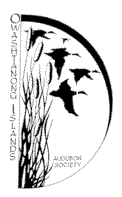Insect Camouflage
Judi Manning
Insects are a large part of the food consumed by other animals. Many insects
disguise themselves as something they are not for protection and survival. Some
use camouflage comprised of colors and patterns to blend in. Others display
warning colors to scare off predators.
Mantids (praying mantis) vary greatly in shape, hue and pattern. There are four
species found in the U.S.; one is native; one is European and two are Oriental.
The latter three were accidentally introduced and later colonized by farmers as
natural pest control. However, they do not know a good insect from a bad insect
and destroy valuable fruit pollinators. Some tropical mantids have bodies
flattened and shaped like leaves. Some resemble bird droppings, which attract
filth-loving flies. Some simulate flowers (rose-leaf mantids of India) with the
legs and thorax shaped like leaves. This illusion attracts nectar-eating insects
to their death.
Insects depending on camouflage stay in one position for long periods of time. A
bird following his dinner, the beautiful Indian dead-leaf butterfly, approaches
a bush and dinner completely disappears. When the butterfly closes its wings and
even to experts, it looks like a dead leaf when it is in its resting state.
Next in line with the best camouflage are moths. Their wing colors and markings
allow them to blend in with their resting places. They also spread their wings
flat sideways and cast practically no shadow. They appear to merge into the
bark.
One hundred years ago, the dark phase of the peppered moth was sought by
collectors in the British Isles because it was so rare. Over the years, soot
began to pour into the atmosphere in conjunction with the rapid industrial
growth. The resting places of these moths grew dark and the light phase moths
became easy targets for birds. The dark moths began to survive, reproduce and
multiple. Now the light colored form of the moth is hardly seen. This is an
excellent example of how environmental changes and pressures favor one variant
of a species.
The caterpillar we know as an "inch worm" is also a master of disguise when it
imitates a twig. It grasps the stem it is perched on with its hind-most prolegs
and stiffly stretches its body into the air at an angle that resembles a stem.
It remains motionless for long periods of time.
In contrast to the use of camouflage for survival, there are the "good tasting"
insects that resemble other "evil tasting" insects. Bold patterns advertise that
it is a protected insect.
Ref:
Insect Masquerades, Hilda Simon, The Viking Press
Copyright © 1997 Owashtanong Islands Audubon Society. All rights reserved.

